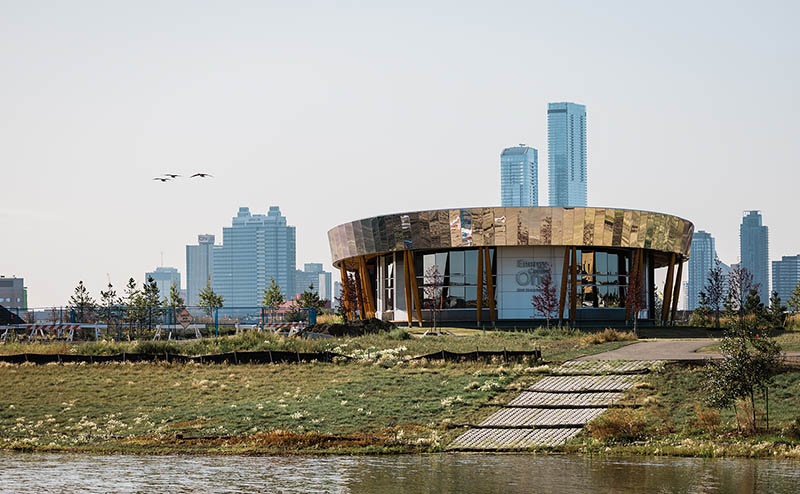The first phase of the Downtown District Energy Initiative (DDEI) started operations in September 2025, and is now providing space heating to the Winspear Centre for Music, Century Place and Chancery Hall.
The City of Edmonton has partnered with EPCOR to deliver Phase 1. Initially, the system will be powered by natural gas boilers.
A plan to incorporate other low-carbon energy sources, which may include a combination of electric boilers, supplied with renewable electricity, wastewater heat recovery and geoexchange, is in place for the full district energy system build out.
How many buildings will connect to the Downtown District Energy Initiative?
The system is designed to connect up to 50 buildings at full build-out by 2050. Three buildings will be connected as part of Phase 1 — the Winspear Centre for Music, Chancery Hall and Century Place — and three as part of Phase 1A — the Citadel Theatre, Stanley A. Milner Library and City Hall. Design work has begun on Phase 2, which will connect up to 20 buildings — primarily privately owned.
View map of DDEI phases
How much in emissions will the system reduce?
The exact reduction will depend on the technology that City Council chooses to invest in over time. At full build-out, which is expected by 2050, the entire downtown system is designed to connect around 50 buildings and has the potential to operate emissions-free.
Why is this city investing in the DDEI? Can’t we leave this to the private sector?
Reports by the United Nations and the private sector have recognized that, due to the complexity of utility development and the urgency of climate change, municipal governments play an essential role in developing district energy systems. Edmonton’s District Energy Strategy is designed to reduce City investment and public sector risk over time by increasing private sector participation. This approach has worked in other Canadian cities, such as Toronto, Vancouver and Markham, Ont.
Why is the system being run on natural gas to start? Isn’t this just the same fuel downtown buildings are using right now?
District energy systems require a lot of capital investment. Because the City is funding the DDEI, it is important to build a financially sustainable utility from the outset. District energy systems are often built using natural gas boilers to start, as they are cost-effective to install and operate. As the utility gains experience and builds its customer base, operating revenues and other funding can be used to “switch out” the fuel to lower-carbon sources. However, even when powered by natural gas, district energy leads to increased energy efficiency.
Why is the system heat only? What about cooling?
To provide the best environmental benefits and economic value, the first two phases of the DDEI will only provide heat. However, the expansion of the system into Phase 2 and beyond could see the addition of cooling services through the addition of emission-reducing technology like geoexchange. City Council would need to approve the implementation of cooling, as further capital investment would be required.


